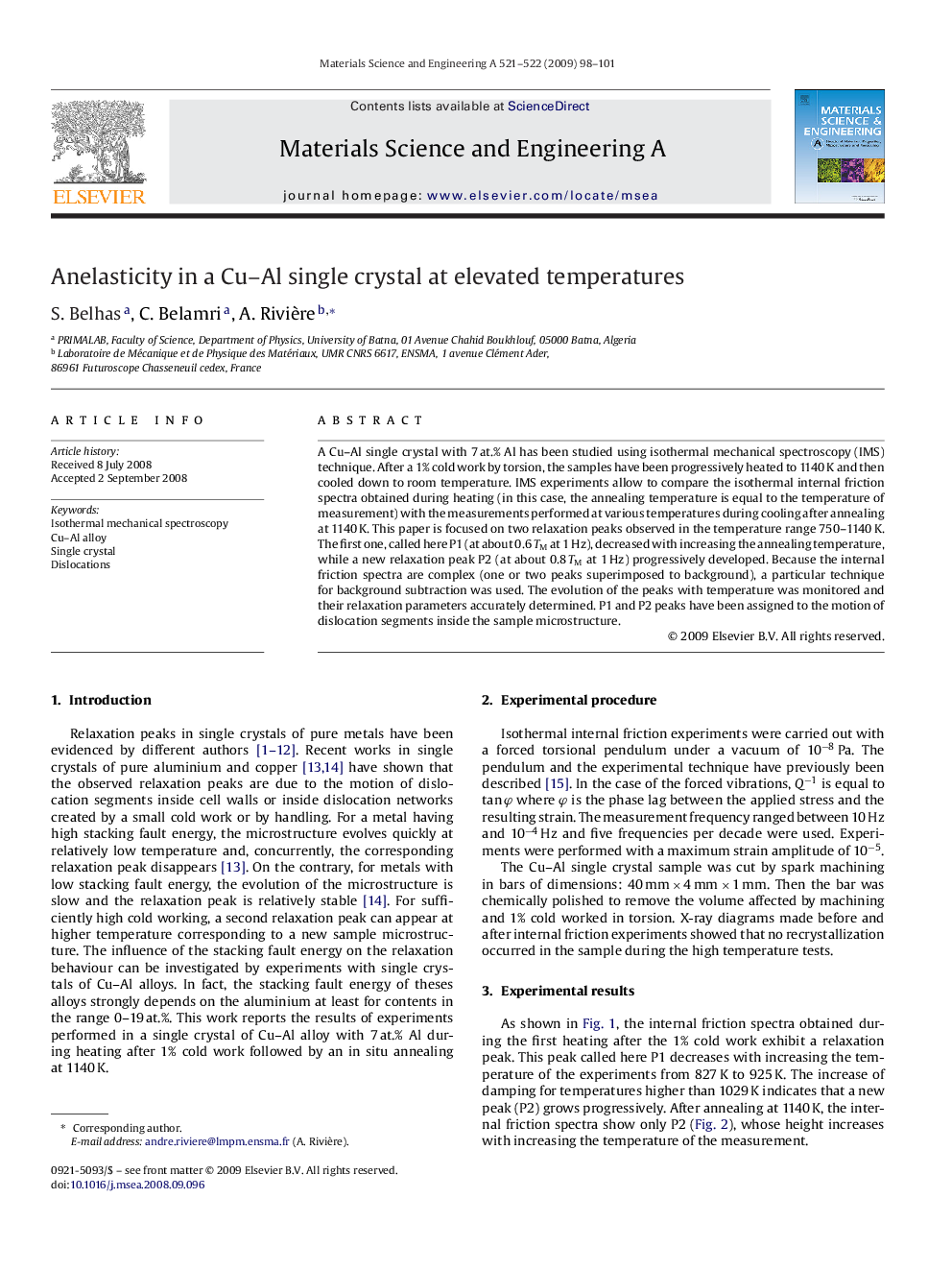| Article ID | Journal | Published Year | Pages | File Type |
|---|---|---|---|---|
| 1580051 | Materials Science and Engineering: A | 2009 | 4 Pages |
Abstract
A Cu-Al single crystal with 7Â at.% Al has been studied using isothermal mechanical spectroscopy (IMS) technique. After a 1% cold work by torsion, the samples have been progressively heated to 1140Â K and then cooled down to room temperature. IMS experiments allow to compare the isothermal internal friction spectra obtained during heating (in this case, the annealing temperature is equal to the temperature of measurement) with the measurements performed at various temperatures during cooling after annealing at 1140Â K. This paper is focused on two relaxation peaks observed in the temperature range 750-1140Â K. The first one, called here P1 (at about 0.6Â TM at 1Â Hz), decreased with increasing the annealing temperature, while a new relaxation peak P2 (at about 0.8Â TM at 1Â Hz) progressively developed. Because the internal friction spectra are complex (one or two peaks superimposed to background), a particular technique for background subtraction was used. The evolution of the peaks with temperature was monitored and their relaxation parameters accurately determined. P1 and P2 peaks have been assigned to the motion of dislocation segments inside the sample microstructure.
Related Topics
Physical Sciences and Engineering
Materials Science
Materials Science (General)
Authors
S. Belhas, C. Belamri, A. Rivière,
